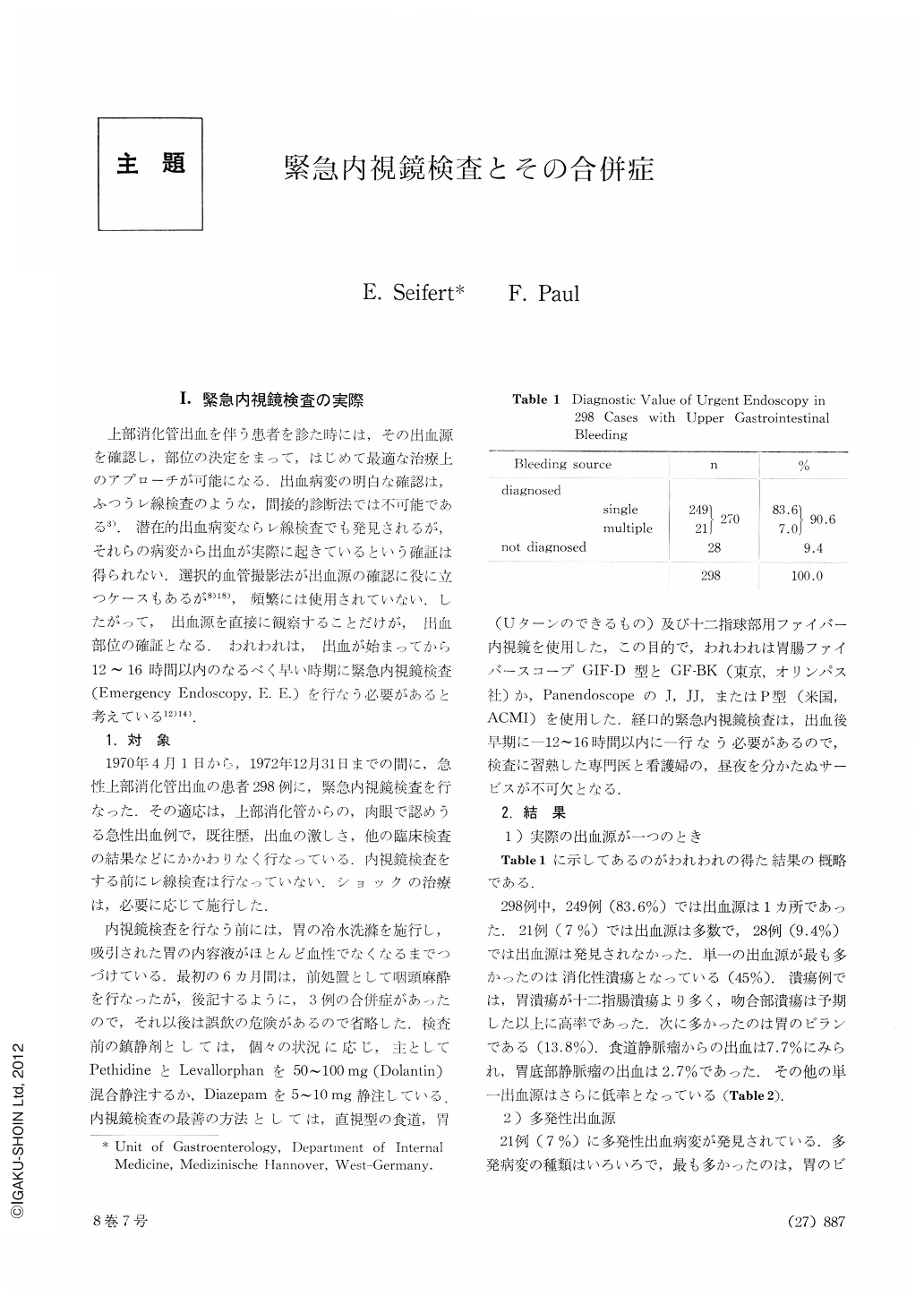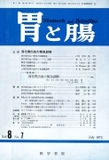Japanese
English
- 有料閲覧
- Abstract 文献概要
- 1ページ目 Look Inside
Ⅰ.緊急内視鏡検査の実際
上部消化管出血を伴う患者を診た時には,その出血源を確認し,部位の決定をまって,はじめて最適な治療上のアプローチが可能になる.出血病変の明白な確認は,ふつうレ線検査のような,間接的診断法では不可能である3).潜在的出血病変ならレ線検査でも発見されるが,それらの病変から出血が実際に起きているという確証は得られない.選択的血管撮影法が出血源の確認に役に立つケースもあるが8)18),頻繁には使用されていない.したがって,出血源を直接に観察することだけが,出血部位の確証となる.われわれは,出血が始まってから12~16時間以内のなるべく早い時期に緊急内視鏡検査(Emergency Endoscopy,E. E.)を行なう必要があると考えている12)14).
Emergency endoscopy (EE) was performed in 298 cases of upper gastrointestinal bleeding within 2 1/2 years. Peptic ulceration proved to be most common source of bleeding (134 cases) of which there were 58 gastric ulcers, 58 duodenal ulcers and 17 anastomotic ulcers. Gastric erosions were next in frequency (41 cases). Esophageal varices were present in 57 patients but in only 29 cases were they the actual cause of bleeding. A gastric carcinoma was the source in only 10 cases. Several other sources were observed 21 times. In 102 of the 298 patients there were additional potential bleeding sources. Complications are relatively rare (1.7%) but severe (aspiration of gastric contents, respiratory or cardiac arrest) if they occur. Shock some times prior to emergency endoscopy, heavy premedication with intravenous sedatives, pharyngeal anesthesia, and misinterpretation of potential bleeding lesions of the G-I-tract are main factors which might induce those complications in critically ill patients. Early recognition and localization of the bleeding lesion is decisive for optimal therapy in upper gastrointestinal hemorrhage. The actual source of bleeding can only be accurately located by means of endoscopy. Urgent endoscopy gives the best results when being performed within the first 12 hours after the onset of bleeding and when blood can still be aspirated from the gastric tube and the precautions are observed.

Copyright © 1973, Igaku-Shoin Ltd. All rights reserved.


